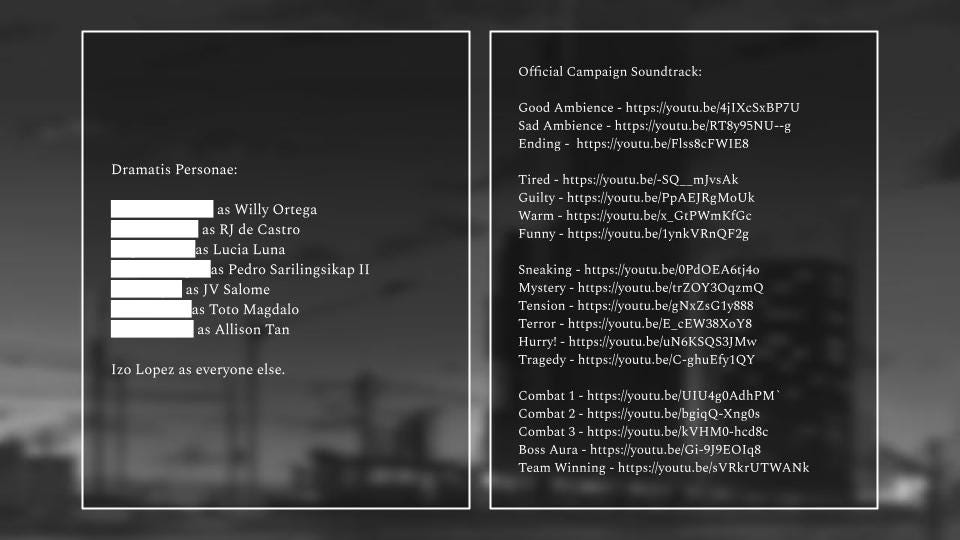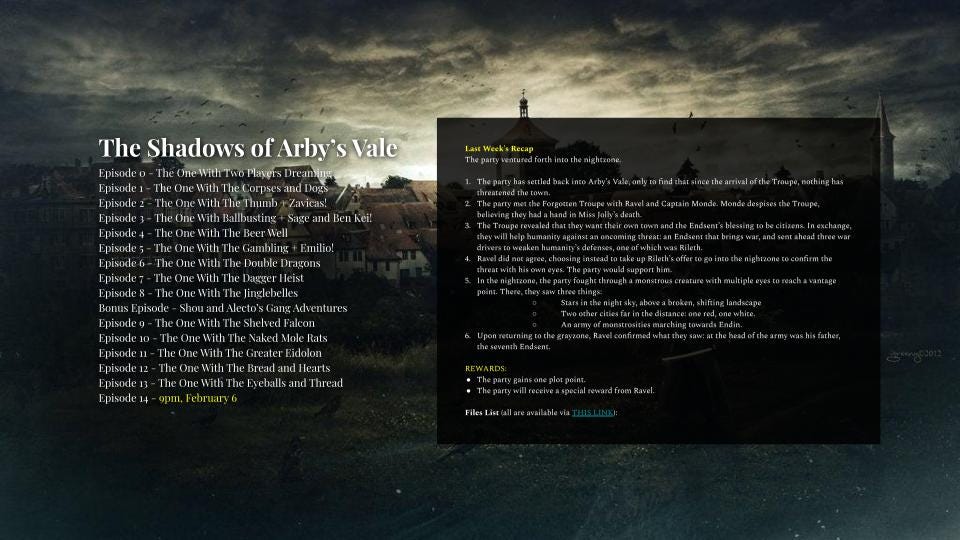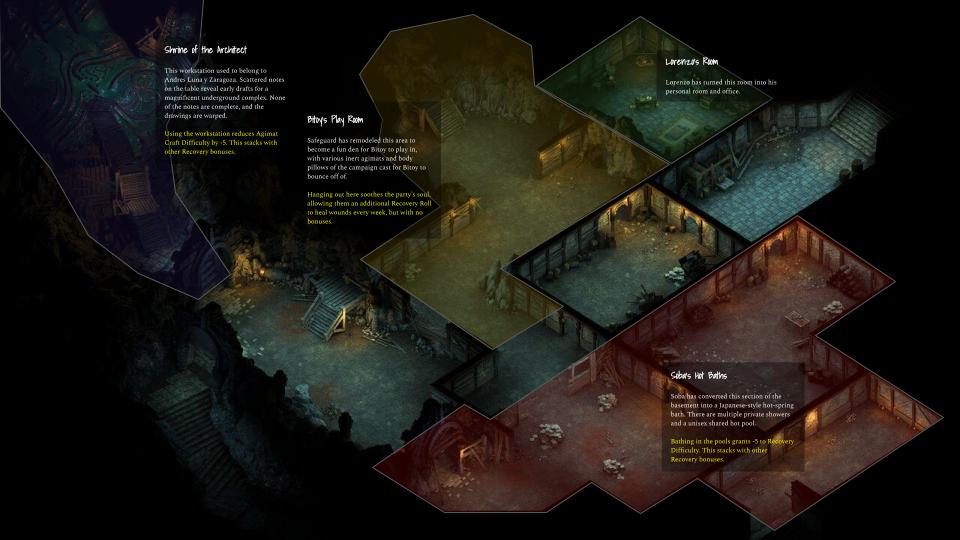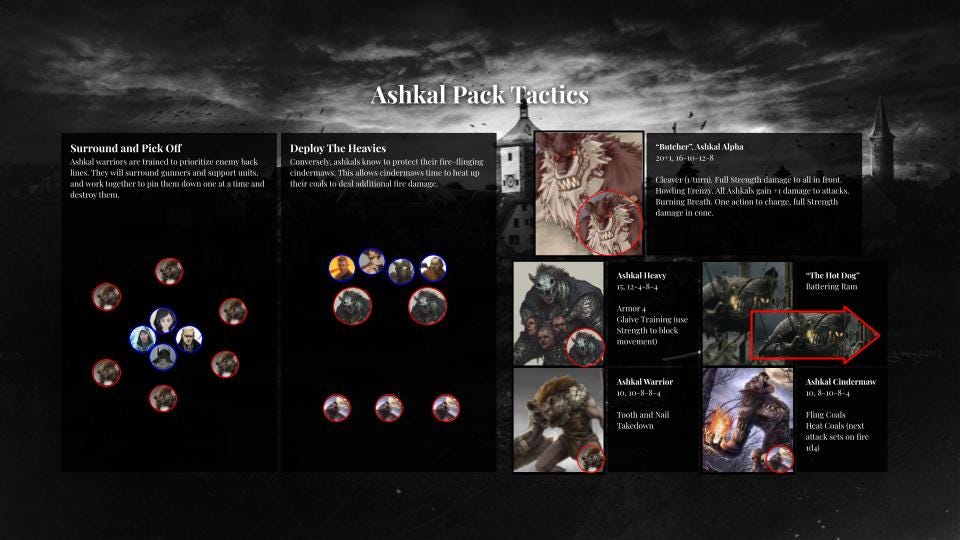(Continued from Part 1.)
The only thing that’s as fun as playing Dungeons & Dragons (or any other TTRPG) is making professional marketing pitch decks. No? Just me?
Well, whether you enjoy the soul-eroding art of the sales presentation or not, it has a lot of things in common with playing a tabletop RPG. For example, just like pitch decks, Dungeon Master prep is crammed at 2AM in the morning on the day it must be presented. It is then shown to a small room of people who will patiently sit through your fumbled narration, then talk over each other to pick it apart when you’re done. Lastly, how well you perform the pitch largely dictates whether or not you’ll be invited back to that table next week.
So since the two activities are clearly one and the same, why not use the same tool for both of them? Let me pitch to you using good ol’ Google Slides for your online D&D (or any other TTRPG) sessions.
Selling Point 3: Develop your own UI.
This is where Slides really has one up on other tools. You can use slides to create any sort of UI you need for your games. You’ve already seen some examples above like NPC cards, town shops, and even a quest map.
Here are some other “screens” that I’ve been playing with recently.
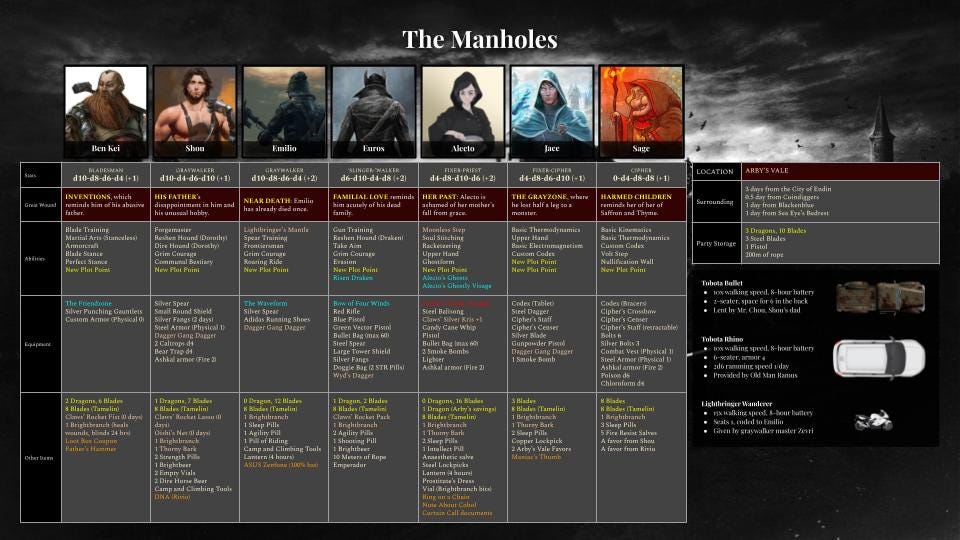
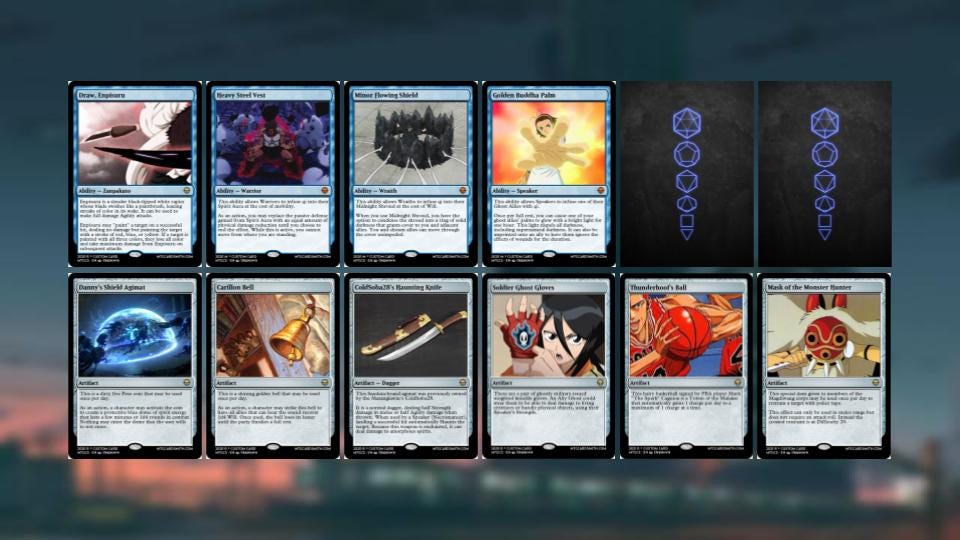
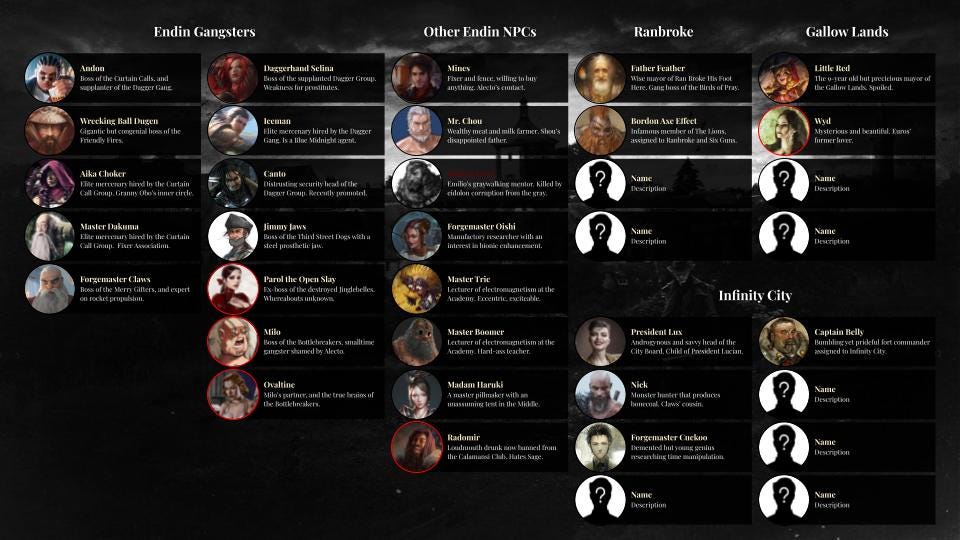

I occasionally find myself inspired to suddenly update my slides for my campaigns, to present the information more cleanly or condense slides to reduce the number of screens that players have to click through. And every time I do I joke that the game UI has patched.
Having robust visual components adds a lot to the D&D experience without interfering with the core gameplay at all, though it does require that you, as Game Master, act as both programmer and game engine.
Still, it really feels like designing a UX and what is a tabletop RPG after all if not just rules for a user experience?
Selling Point 4: Sessions are archived.
This is the last thing that Google Slides does well that improves the RPG experience, in my opinion. As you continue to run a long campaign on Google Slides, I suggest not deleting any slides.
Soon, finished fights and earlier scenes from the campaign will start accumulating on the file. Apart from being useful when you want to pull up an old NPC token or reference previous shops and such, this also allows the players and DM to look back on the history of the campaign. In building this article, I went through slides from my campaigns from almost a year ago and I can still remember how each session felt, and how the players triumphed (or I triumphed, with an overpowered boss, heh).
It is the unique magic of roleplaying as a group that even though everything that happens in Dungeons & Dragons (or any other TTRPG) is imagined, every player feels like it happened to them for real. It’s why most players will tell the stories of their games in a first-person POV. This happened to me. I slew a dragon.
Having these scenes in the form of aftermath slides is almost like having an actual photo album of a campaign. It’s nice to look back at a session 1, twelve months down the road after a year of jokes and character growth. It’ll be even nicer to remember a good campaign when it’s over. I actually don’t know if the other tabletop programs can archive sessions in this way but with Google Slides, it’s already a literal slideshow.
UP NEXT (Other things I want to write about):
Because I don’t like my campaigns becoming stale or rote, I’m always trying to come up with new gameplay to integrate into my games like the Battle Royale session or the stealth-with-vision-cones mission I showed in this article. I’d like to talk about a few more odd sessions I’ve had, like one with a map made of playing cards, in-game casino games, and a character debate I ran as a battle.
Just like every DM on earth, I’d like to talk about the two actual campaigns I’m running, both of which are using my Fables and Tables system, and have their own campaign manuals. One is a very typical grimdark fantasy setting. The other one is high schoolers with ghost powers in modern Metro Manila.
But before those: my Fables and Tables “d4-12” adjustment to D&D’s d20 system.



